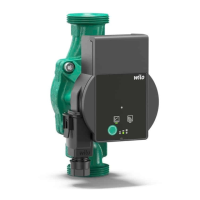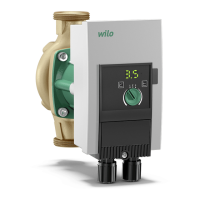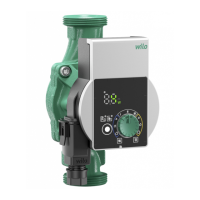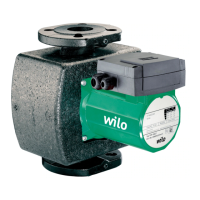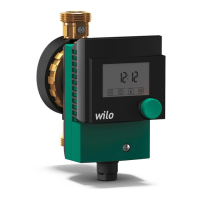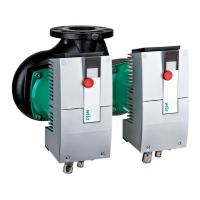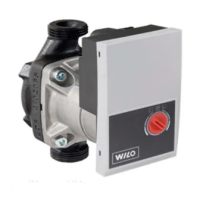en Safety
8 WILO SE 2019-04
▪The work area in which the device is used is not a recreational area. No persons are al-
lowed in the work area during operation.
▪The operator must report any faults or irregularities to a line manager immediately.
▪If hazardous defects occur, the operator must immediately deactivate the device. Haz-
ardous defects include:
– Malfunction of safety and monitoring devices
– Damage to housing parts
– Damage to electrical equipment
▪Open all gate valves in the piping on the suction and pressure side.
▪Only carry out the maintenance tasks described in these installation and operating in-
structions.
▪Only genuine spare parts from the manufacturer may be used for repairs, replacements,
add-ons and modifications. Use of parts other than original parts releases the manufac-
turer from any liability.
▪Collect any leakage of fluids and operating fluids immediately and dispose of it accord-
ing to the locally applicable guidelines.
▪Tools and other objects should only be kept in their designated places.
Thermal hazards
Most drive surfaces can become hot during operation. The areas of the stuffing box and
bearing bracket on the pump can become hot in the event of a malfunction or incorrect
setting.
The surfaces in question also remain hot after switching off the unit. These surfaces
may only be touched with extreme caution. Wear protective gloves if it is essential to
touch hot surfaces.
Make sure that the drained water is not too hot for more intensive contact with skin.
Introduce appropriate equipment to protect components that may become hot against
accidental contact.
Hazard due to articles of clothing or other objects being caught
To avoid the dangers presented by the rotating parts of the device:
▪Do not wear loose or frayed clothing or jewellery.
▪Do not dismantle devices for protecting against accidental contact with moving parts
(e.g. coupling guard).
▪Only put the device into operation once this protection is in place.
▪The devices for protecting against accidental contact with moving parts may only be
removed when the system is at a standstill.
Hazards due to noise
Observe the sound pressure specifications on the motor rating plate. The sound pres-
sure value of the pump is generally about the same value as that of the motor +2dB(A).
Observe the applicable health and safety regulations. If the device is operated under
normal operating conditions, the operator must measure the sound pressure.
Sound pressure levels of 80dB(A) and above must be noted in the work regulations!
The operator must also introduce the following preventative measures:
▪Inform the operating personnel
▪Provide hearing protection
For a sound pressure level of 85dB(A) and above, the operator must:
▪Make it a mandatory requirement to wear hearing protection
▪Demarcate the noisy areas.
▪Take measures to reduce noise (e.g. insulation, noise barriers)
Leakages
Observe local standards and regulations. Avoid pump leakages to protect persons and
the environment against hazardous (explosive, toxic or hot) substances.
Ensure that a dry run of the pump is not possible. A dry run can damage the shaft seal
and thereby cause leakages.
2.7 Maintenance tasks
▪Wear the following protective equipment:
– Sealed safety goggles
– Safety shoes
– Safety gloves for protection against cuts
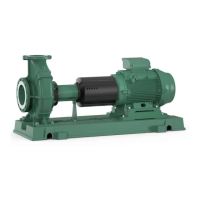
